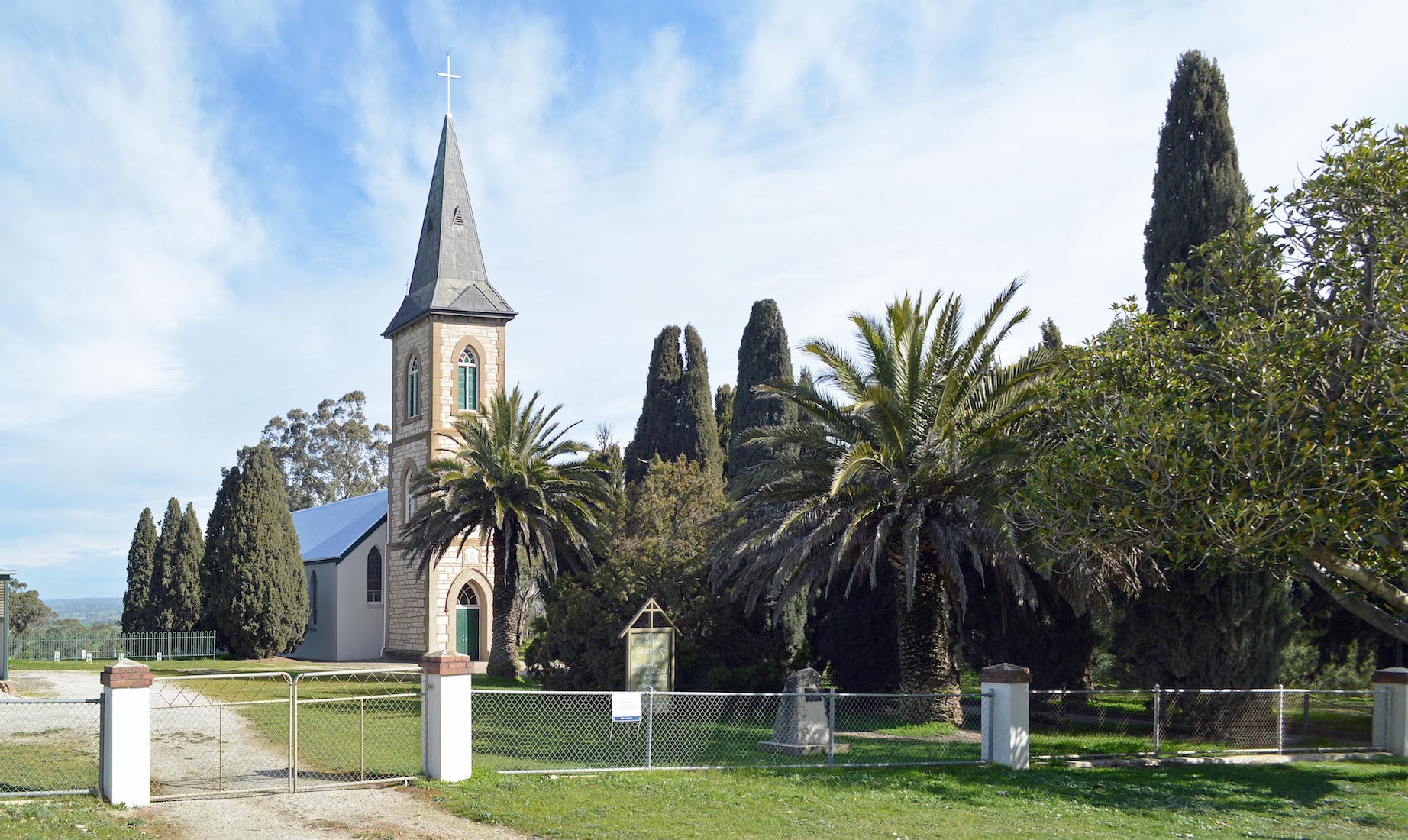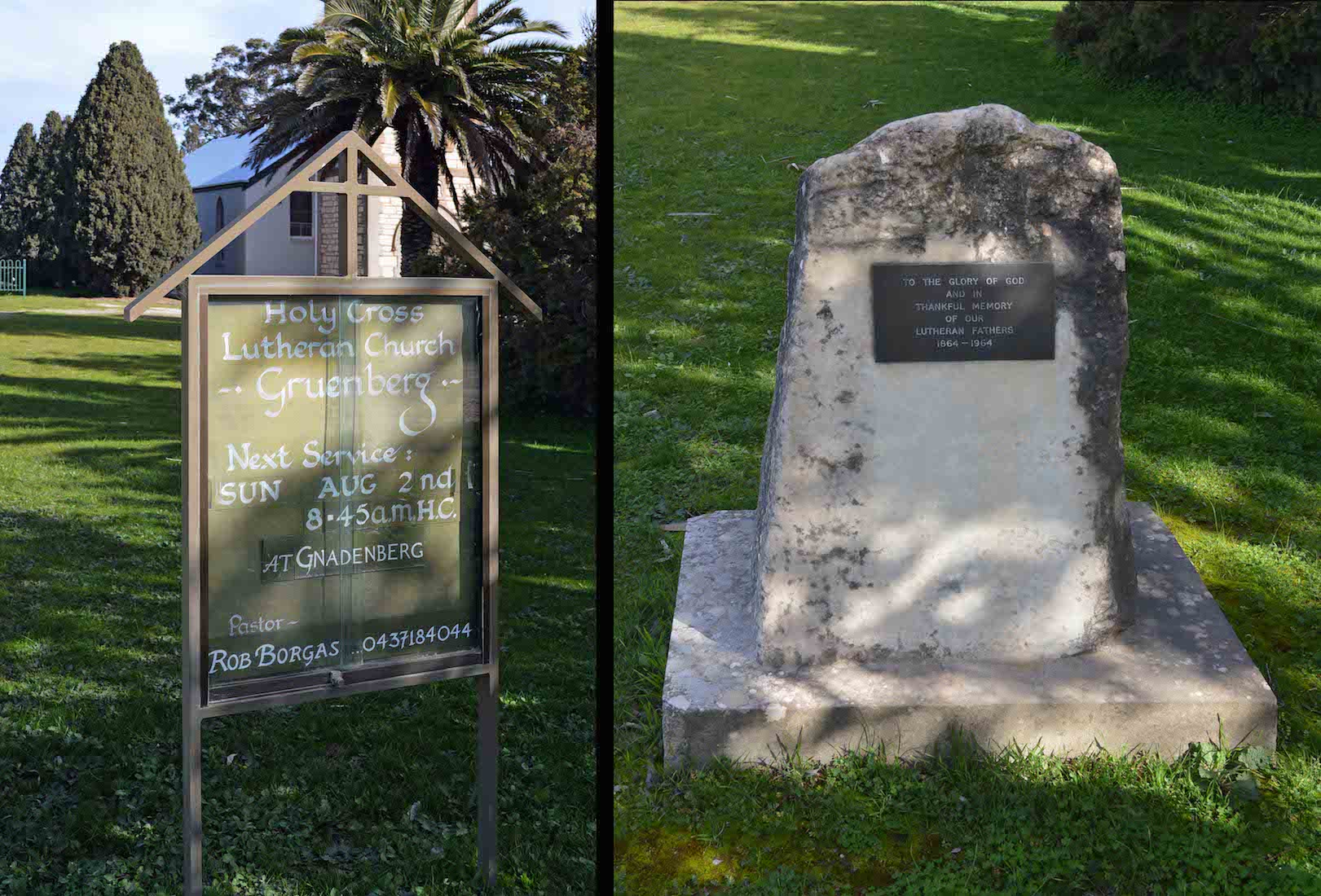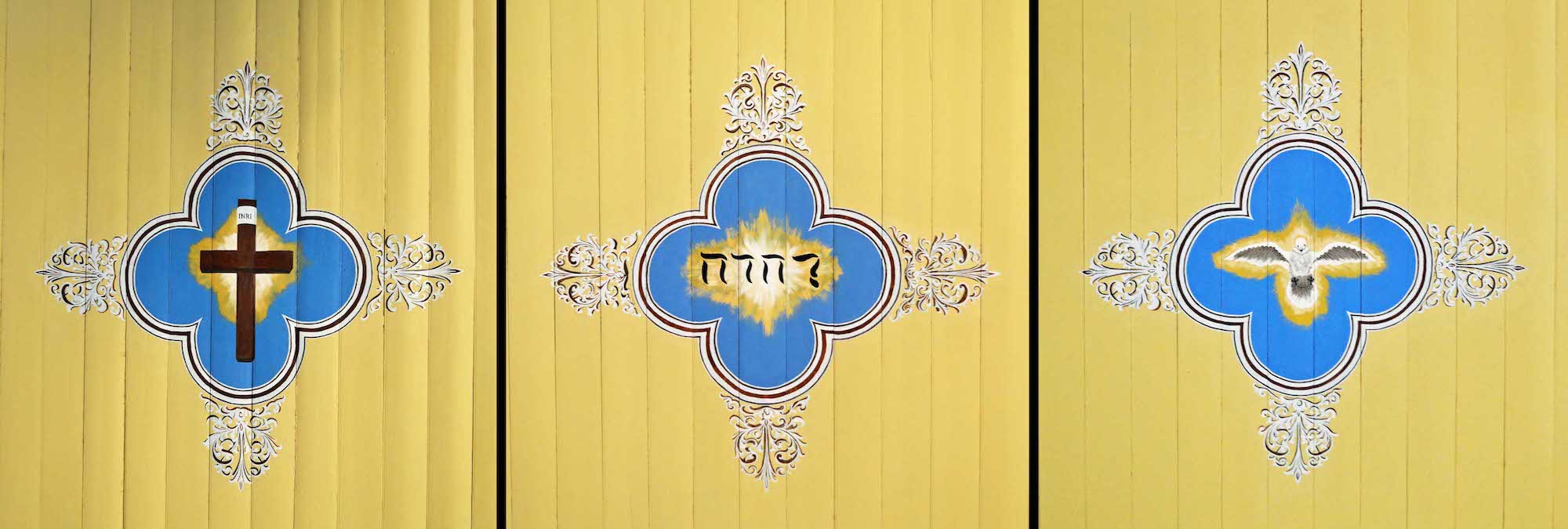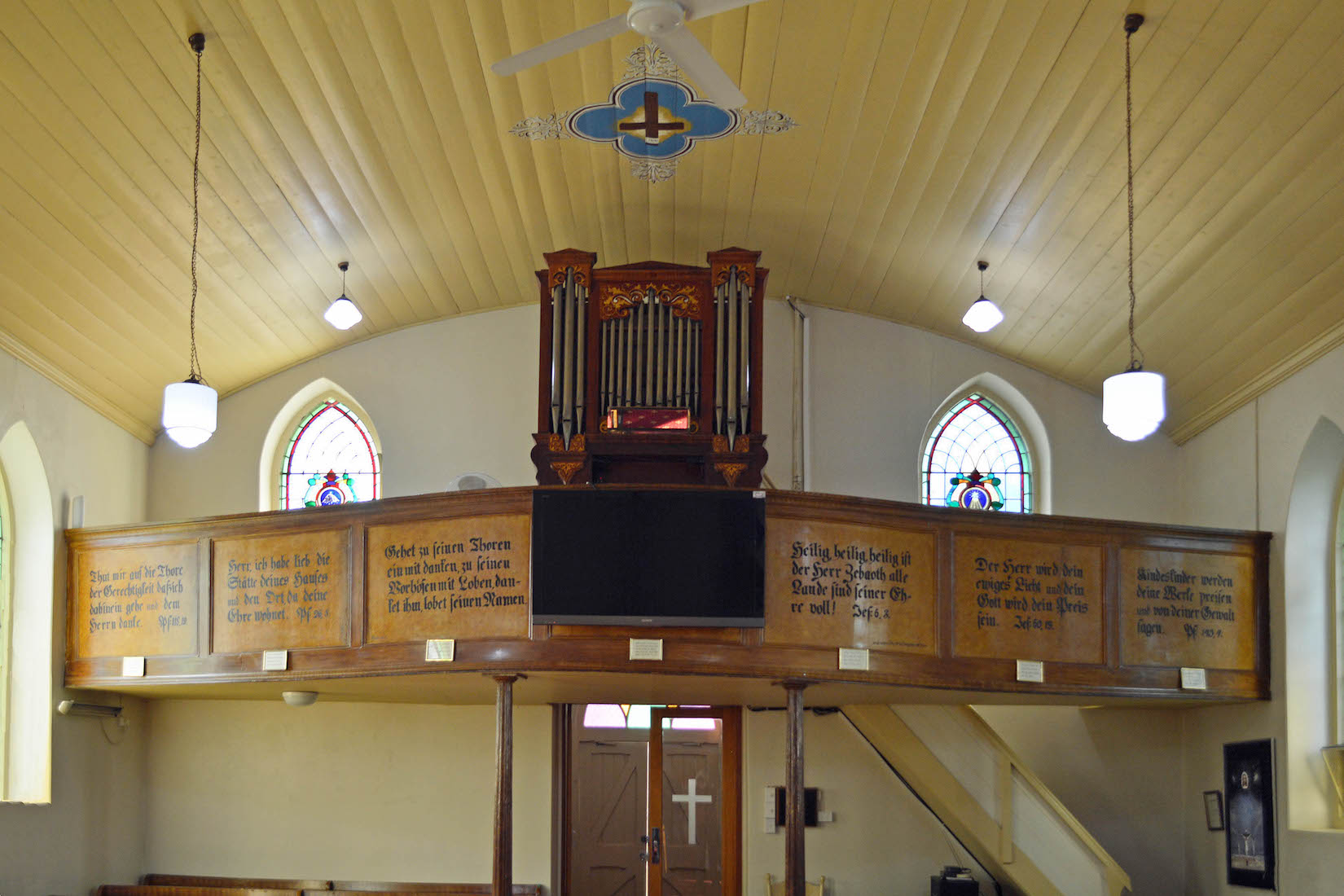
We approach the Church over kilometres of dirt roads traversing vast stretches of pasture land. The Church then stands in splendid isolation behind an oasis – a dense plantation of palms and trees. Its tower and spire stand out like a beacon. In front of the Church there is a notice board and a memorial pillar.
2. SIGN AND PLAQUE

The sign spells out the name: ‘Holy Cross Lutheran Church – Gruenberg’. It tells us that the next service is at the nearby Gnadenberg Church, and reveals the name of the pastor. The text on the plaque reads: ‘To the Glory of God and in thankful memory of our Lutheran fathers 1864 – 1964. This was obviously unveiled at the Centenary celebration of the building of the present Church.
3. THE TOWER
The graceful Church towers are a common stand-out feature of the Valley Lutheran churches. This view is from the driveway gates into the property.
4. WEST ENTRY
As well as the side driveway entrance, there is another gated entrance directly to the West doors. The path is lined by large macrocarpa trees, and we pass under a sign which reads, ‘Gruenberg Lutheran Church’. The name refers to the position of the Church on a ‘green hill’. The hill top setting was not really evident from our approach route, but later we shall see that there is quite a slope down from the far end of the Church. I am less sure about the ‘green’ adjective: for our August visit, ‘brown’ might have been a better descriptor!
5. SOUTHWEST VIEW
As is our custom, we walk around the outside of this Church. It appears that the tower is likely to be the most distinctive feature of Holy Cross Church, although the windows are all in Gothic style.
6. SOUTH WALL
We recognize immediately the characteristic window design of the Valley churches: squared lattice windows with mostly clear glass and a central motif. I assume that the adjacent buiding shown at left was the first church, later used as a Sunday School and teacher’s residence.
7. OLD SHED
Near the Church stands this old shed, full of character, but perhaps one for the handy man!
8. HIGH WINDOW AND VESTRY
A small vestry stands at the Eastern end of the Church. Also of interest is a small high ‘Gothic’ window in the Eastern Church gable.
9. NORTH WALL
There are five windows along each side of the Church. The windows on this side have been given some reflective treatment to combat the morning sun.
10. TOWER
We complete our circuit of the Church and return to the front tower. Unusually, the base of the spire is surrounded by four gables, each with a small cross. We notice again the two plaques by the Western doors.
11. ENTRY PLAQUES
The top plaque reads (in German): ‘The Evangelical Lutheran Church, to the Cross of Christ (Holy Cross), Grünberg. Inaugurated on 16th October, 1864.’ The lower plaque has text: ‘This stone was laid on the 50th Jubilee on 12th February 1914. 1 Cor 3:11’ The verse from Corinthians is: ‘For no one can lay any foundation other than the one already laid, which is Jesus Christ.’
12. FOYER GALLERY
We enter the Church. On our left, along the North wall of the foyer, is a gallery of sketches: the Church pastors from 1864 to 2008. The Valley Lutherans have a fine tradition, and are proud to remember it.
13. THE FOYER SOUTH WALL
The gallery continues along this wall, but there are other mementoes too. At right is a banner with the verse ‘Christ lives in me’ from Galations 2:20.
14. TWO HISTORICAL ITEMS
Also on this wall is this framed certificate placing the Church on the Register of State Heritage items. The fancy wooden letter ‘A’ is attached to the wall just right of the entry doors. It used to be on top of the pulpit hood, and was originally placed there in 1864 in memory of a generous gift to the Church building by George Fife Angas.
15. LAST SUPPER
And in a corner of the foyer is displayed this colourful representation of The Last Supper – the meal Jesus shared with his disciples before his journey to the Cross.
16. THE NAVE
The interior of the Church is light and bright and colourful. The ceiling displays some interesting art work, and the windows have some familiar features. The front wall is decorated with banners – asymmetric to allow for projection of the words for the hymns! The font, Cross and altar are at the front centre.
17. NORTH WINDOWS
The five windows along the North wall have a common attractive template with significant variation only in the circular motif. I am discovering that there is a standard selection of these which appear in various Valley churches. So here from left we have: • the IHS iconograph for Christ; • cross and crown; • dove; • lamb with banner; • oil lamp and Bible.
18. SOUTH WINDOWS
The windows on the South side of the Church have the same format as the Northern windows, but the motifs are different. From left we have: • dove and chalice; • chalice and vine with grapes; • sailing ship representing the church; • cross, anchor and heart; • symbols Alpha and Omega, and Chi-Rho representing Christ.
19. CEILING EMBLEMS
The ceiling is made up of painted wooden planks, on which are three blue quatrefoil designs. From left (the Western end) we have: • a Cross, alluding to Christ’s death; • the Hebrew word Yahweh for God (in fact the Hebrew letters YHWH read from right to left); and the dove representing the Holy Spirit. A Trinitarian Ceiling! We shall see that the artist was Wilf Weaver.
20. BALCONY
A balcony at the West end supports a small pipe orgen. Access to the balcony is by a set of stairs which rises from inside the Church. The seven panels of the balcony of the gallery bear texts in German from Scripture. Unfortunately the central text is covered by a television screen – a consequence of this modern age!



















